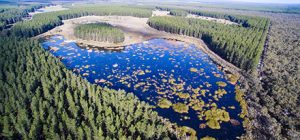The Japan Aerospace Exploration Agency and the UN Food and Agriculture Organization have agreed to cooperate on monitoring forests and mangroves, considered a sponge for greenhouse gases, around the world by using data from observation satellites amid deepening concerns over climate change. Source: Japan Times
The partnership adds observation data accumulated by JAXA for over 25 years from the space agency’s powerful L-band Synthetic Aperture Radar to FAO’s widely used toolkit for monitoring forests, according to the organizations.
“As deforestation and land-use changes are one of the leading sources of global carbon emissions, satellite based information has a critical role to play in supporting countries to achieve their commitments on climate change,” Daniel Gustafson, FAO’s deputy director-general for programs said.
The organizations signed a three-year agreement last month in Tsukuba, Ibaraki Prefecture.
“JAXA’s experience in accumulating L-band SAR data is essential to learn about changes in forests and predict their future,” JAXA Vice President Ryoichi Imai said.
The satellite’s radar offers a unique capability in observing Earth’s surface regardless of time and weather, while optical satellites are impeded by rain and clouds or lack of sunlight.
“JAXA expects our satellite data to be used for supporting sound decision-making,” Imai said.
FAO’s platform for forestry and land-use assessments is used in 160 countries, offering them easy access to satellite data and supercomputing power and allowing them to create critical forest and land cover information to mitigate, and adapt to, climate change.
JAXA joined other contributors to the FAO platform, including Google LLC, NASA, the European Space Agency and the World Bank, and expects the partnership to improve the accuracy of its satellite data.






